Cast immobilization
1. Goals
The main goals for treatment (nonoperative or operative) of these ligament injuries are:
- Restoration of elbow stability
- Prevention of nonunion of the epicondyle
- Prevention of secondary displacement
2. General considerations
Minimally displaced 13-E/7L fractures can be managed with simple immobilization in a cast or splint.
In children, it is recommended to immobilize the elbow joint by a splintage configuration that effectively immobilizes the elbow joint. A single posterior splint is not usually adequate.

3. Posterior and anterior long arm splints
Two splints are prepared according to the correct posterior and anterior lengths. The posterior splint extends from the metacarpal heads to the proximal third of the humerus. The anterior splint extends from the palmar flexor crease to the proximal third of the humerus.
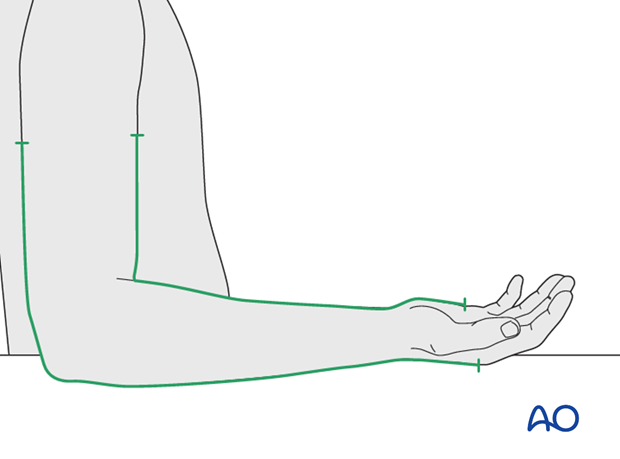
The two splints are held in place with an elastic spiral bandage. The tubular bandage is then folded back over the splints above and below.
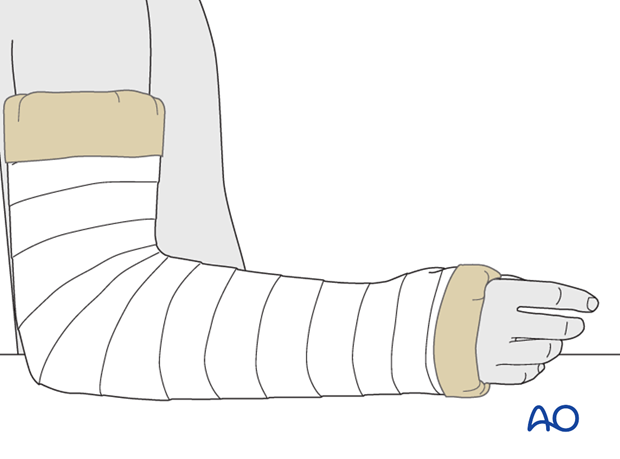
4. Circular plaster cast
Cast padding
Circular cast padding is applied from the metacarpal heads to the axilla.

Application of plaster cast and splint
Circular plaster cast is applied in the same way, starting from the hand and going up to the proximal humerus.
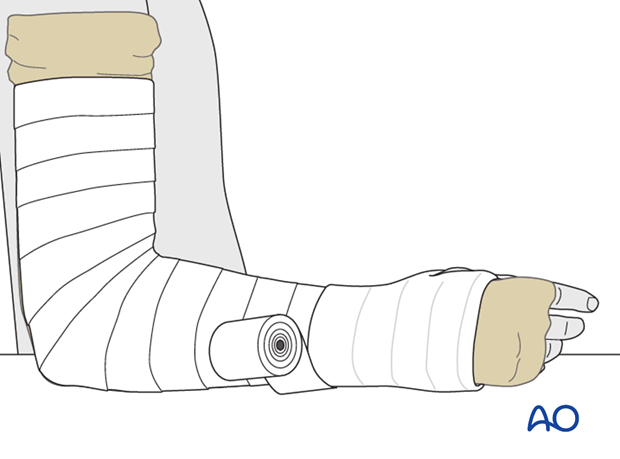
After 2-3 layers of circular plaster cast, it is recommended to apply an additional posterior splint to increase stability.
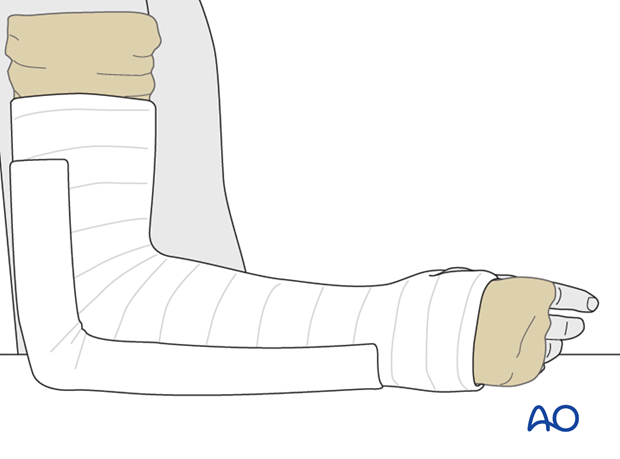
2-3 more layers of plaster bandage are applied over the posterior splint.
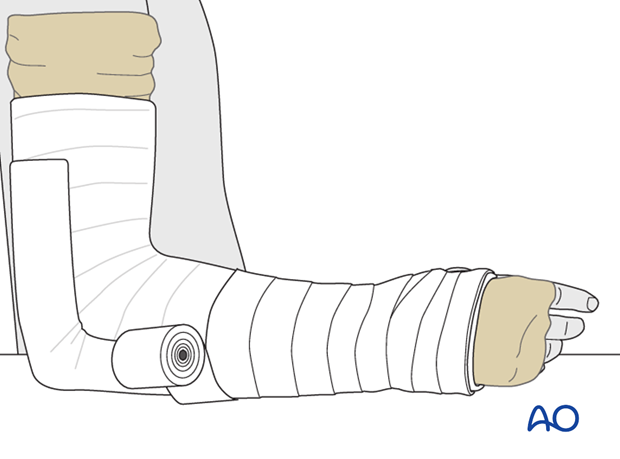
The completed cast

5. Aftercare
If the child remains for some hours/days in bed, the elbow should be elevated on pillows to reduce swelling and pain.
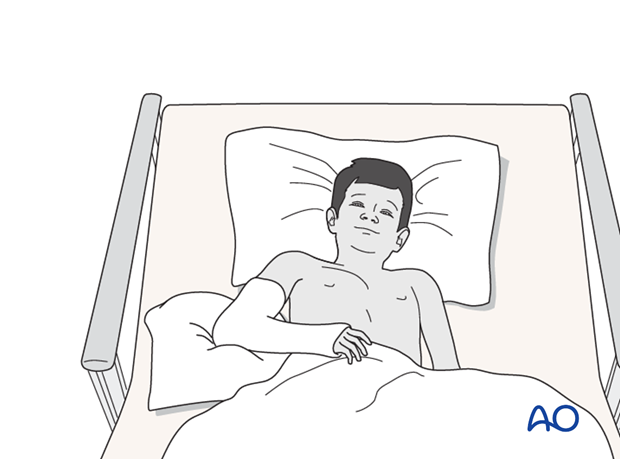
After discharge from hospital, the casted arm should be held in a sling for immobilization.
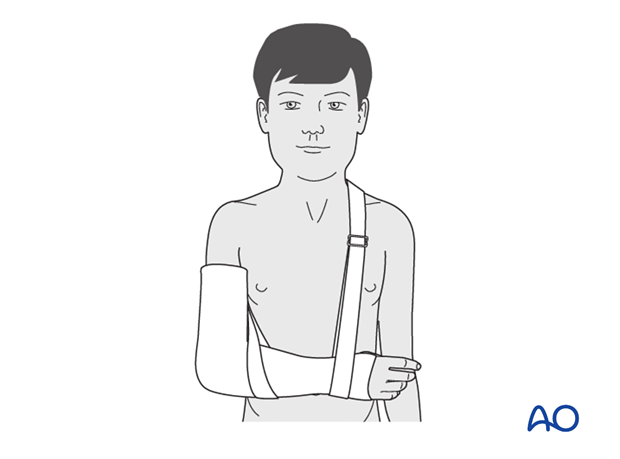
Note: In any case of elbow immobilization by plaster cast, careful observation of the neurovascular situation is essential both in the hospital and at home.
See also the additional material on postoperative infection.
It is important to provide parents with the following additional information:
- The warning signs of compartment syndrome, circulatory problems and neurological deterioration
- Hospital telephone number
- Information brochure
Cast removal
X-ray control should be scheduled according to the estimated healing time (approximately 3 weeks). Any x-ray to assess healing must be performed out of the cast.













